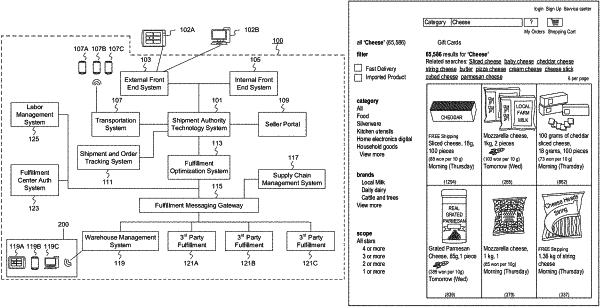| CPC G06Q 30/0202 (2013.01) [G06F 30/20 (2020.01); G06N 7/00 (2013.01); G06Q 10/087 (2013.01); G06F 12/0802 (2013.01); G06F 17/16 (2013.01)] | 18 Claims |

|
1. A computer-implemented system for outbound forecasting, the system comprising: a memory storing instructions; and at least one processor configured to execute the instructions to:
generate an initial matrix of priority values assigned to a plurality of fulfillment centers (FCs) in each region, of a plurality of regions;
feed a simulation algorithm with the initial matrix of priority values to simulate outbound flow;
determine a number of FCs, among the plurality of FCs, comprising an outbound capacity utilization value that exceeds a first predetermined threshold;
feed the simulation algorithm with a second matrix of priority values assigned to the plurality of FCs to generate one or more additional matrices of priority values, wherein the second matrix of priority values maintains the priority values assigned to the determined number of FCs in the initial matrix and assigns different priority values to remaining FCs, among the plurality of FCs, comprising outbound capacity utilization values below the first predetermined threshold;
generate a FC priority filter based on the one or more additional matrices of priority values;
simulate customer demand at each of the FCs; and
modify an allocation of a plurality of SKUs among the plurality of FCs in a database based on the generated FC priority filter and the simulated customer demand,
wherein at least a portion of the simulation algorithm is cached, and
wherein the cached portion of the simulation algorithm comprises at least one constraint that remains substantially constant with each run of the simulation algorithm.
|